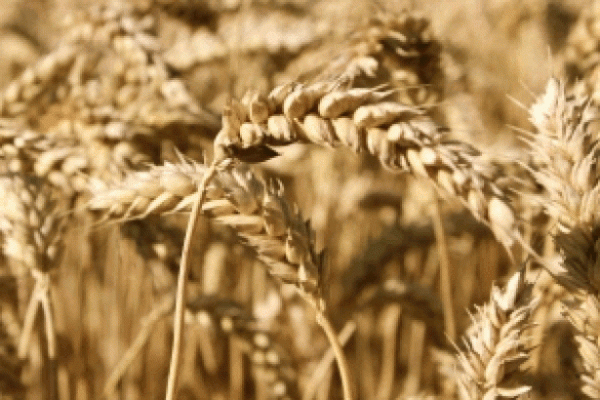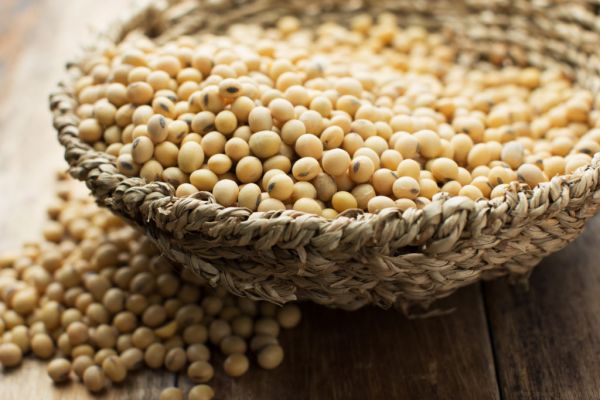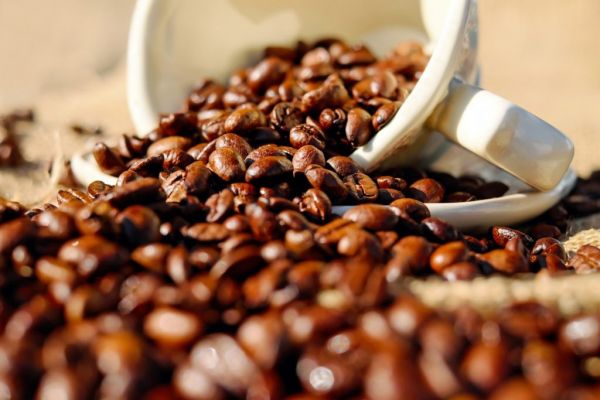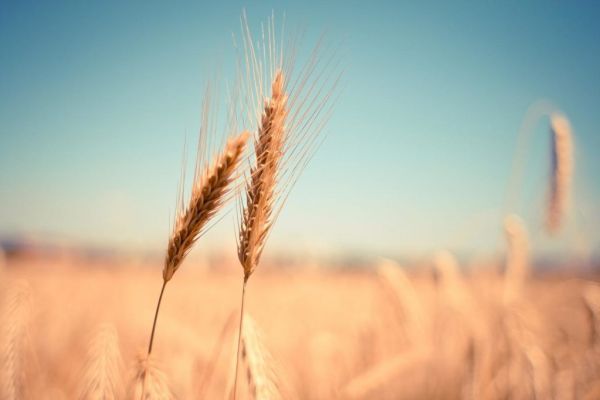It’s been so hot and dry in parts of the U.S. Great Plains that young wheat plants are having a hard time staying green. In fact, the crops that Michael Peters farms on 3,100 acres in Oklahoma turned a bluish hue, a sign of stress that agronomists say can be a precursor to a sub-par harvest.
While the wheat won’t be harvested until June or July, leaving time for a recovery, growers say they are increasingly concerned about the newly planted crop. Abnormally dry and moderate drought conditions have increased in Kansas, Colorado, Nebraska and Oklahoma over the past three months. Along with some unusually windy weather, it’s getting difficult for plants to emerge and establish strong root systems before going dormant for the winter.
Some investors are betting that a smaller crop from the world’s second-largest wheat exporter and improved demand will erode global inventories that are forecast to be the biggest ever. Prices in Chicago have rebounded from a 10-year low in August, and hedge funds in late October increased their bets on a rally for hard red winter wheat -- the variety grown in the Plains -- to the highest in 15 months, U.S. government data show.
“I’m not bullish by any means, but there’s a change in the sentiment,” Arlan Suderman, chief commodities economist at INTL FCStone Financial Inc. in Kansas City, said in a telephone interview. “The funds see this. They basically say, no longer are we hearing new bearish news. The tide has turned.”
On the Chicago Board of Trade, most-active futures are up 3 percent since the end of September to $4.1425 a bushel on Friday. Prices will average $4.30 in the first quarter of 2017 and $4.60 in the second, Rabobank International said in report on Oct. 20, citing weather risk.
World Crops
Crops grown by other major exporters are also facing adverse conditions. In Ukraine, drought in September followed by rains and freezing weather last month means a “considerable” share of plants will be underdeveloped before wintering, market researcher UkrAgroConsult said in a report this week. India will boost its imports more than six-fold to a 10-year high after dry weather hampered crops, an industry group estimated. Last week, Australia’s largest exporter cut its forecast of output from Western Australia by 18 percent.
In the U.S., there’s little relief seen in the weather outlook, according to David Streit, the senior lead forecaster at Bethesda, Maryland-based Commodity Weather Group LLC. A disorganized storm system this weekend will bring moisture to less than half the wheat belt in the central Plains, the nation’s biggest wheat-growing area, he said. Most fields in western Kansas, eastern Colorado, northern Oklahoma and parts of Nebraska will receive little or no rain.
An early sign of stress is the blue hue, created on the outside of wheat leaves that have a waxy layer called a cuticle, said David Marburger, the small grains specialist at Oklahoma State University Extension in Stillwater. Young plants try to build up more wax as a defense mechanism to try to conserve moisture, altering their color, he said.
Weak Roots
If crops aren’t able to get the moisture they need, it could spell trouble. While wheat is a hardy grass that’s usually resilient to the bitter cold and snow that sweep the Plains, the earlier period of root development is crucial. Small plants that haven’t been able to toughen up before the freezing temperatures set in will be especially vulnerable.
Gary Millershaski’s fields near Lakin, Kansas, are a case in point. He’s worried about the root structure for about a quarter of the 3,400 acres he sowed, since those seeds got into the fields later and are now showing signs of spotty emergence. Crops that were planted starting Sept. 20 are as tall as 4 inches (10 centimeters) now, while those that went in later are about 2 inches and smaller.
“If the top growth’s not that good, the root structure’s not that good,’’ said Millershaski, 53. “If you want to be a worry wart, that’s what we’re worried about.”
Crop Conditions
About 58 percent of the U.S. winter-wheat crop was in good or excellent condition as of Oct. 30, down 1 percentage point from a week earlier, government data showed this week. Good-to-excellent ratings in Kansas, the biggest grower, fell 4 percentage points. Also, declining prices over the past four years led to fewer acres being planted.
Still, the crop scores remain higher than a year earlier. Millershaski said he’s not “losing any sleep” over the dry conditions just yet. An inch of rain before the start of winter dormancy would be enough for most of his plants to recover.
Ballooning world inventories also may help offset shortfalls from the winter harvest. Global stockpiles of all wheat varieties will expand 3.6 percent to an all-time high before the next Northern Hemisphere winter crops are harvested, the U.S. Department of Agriculture predicts.
Less Grazing
For some farmers, the dry weather is a double whammy. After planting winter wheat from mid-September to early November, some growers use the fields to raise livestock. They can buy 500-pound cattle that graze on the young grasses from November to early March, selling them to feedlots at around 800 pounds, before the plants renew spring growth and develop grain. The animals are source of revenue that has become especially important to preserving profit as crop prices tumbled.
“We need the wheat crop to get established so we can put cattle out on the fields,” Peters, 45, said by telephone from his farm in Okarche, Oklahoma. After a storm Nov. 2 dropped about 0.7 inch of rain, he is shopping for 200 to 300 calves, compared with 1,000 normally.
“Producing wheat by itself will not make money,” Peters said. “Last year, we were in a lot better shape because we had more moisture and cooler temperatures.”
News by Bloomberg, edited by ESM. To subscribe to ESM: The European Supermarket Magazine, click here.














